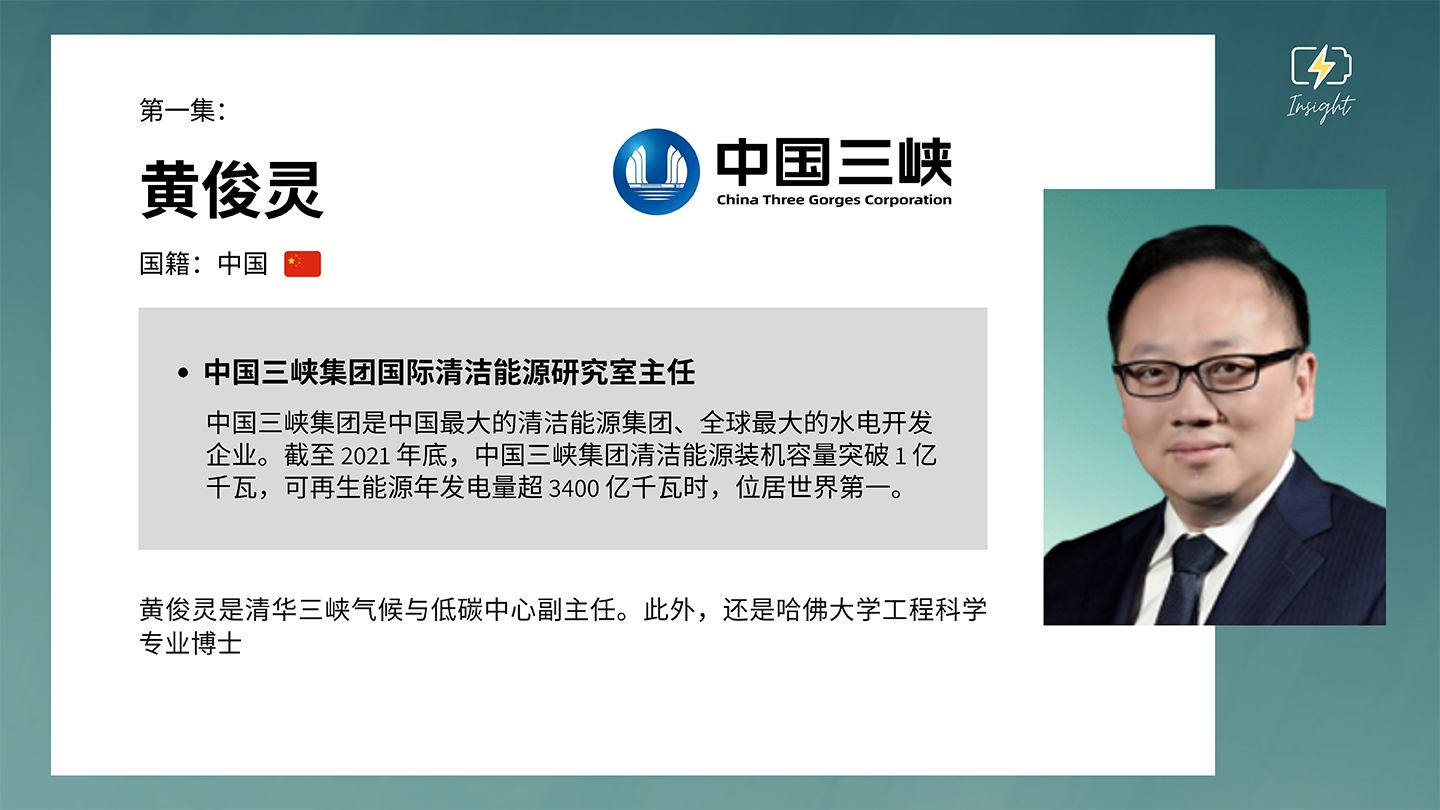储能洞察访谈 第一集:黄俊灵

中国三峡集团是中国最大的清洁能源集团、全球最大的水电开发企业,对风能、太阳能等可再生能源的开发利用也取得了显著成效。作为这方面的专家,您认为储能对于中国以及全球构建可再生能源系统的重要性如何?
三峡集团作为三峡大坝的运营主体,是中国最大的清洁能源集团、全球最大的水电开发企业。2021年,三峡集团的可再生能源发电量超过3400亿千瓦时,居全国第一,为社会经济发展注入了强劲动力。三峡集团也高度关注中国电力行业的脱碳转型。
中国力争2030年前实现碳达峰,2060年前实现碳中和。为实现这一目标,中国计划到2030年,风电、太阳能发电总装机容量达到12亿千瓦以上。但当太阳能、风能等可再生能源接入电网时,其显著的波动性和间歇性将为电力系统的安全稳定运行带来挑战。未来,风电和太阳能发电将逐步成为我国的主体能源,因此储能将成为保障电力系统安全稳定运行的关键,但它的灵活调节能力目前尚未得到充分开发。
近年来,储能技术得到了大规模的研究与开发,如抽水蓄能、氢储能、电池储能等技术,可以满足不同的储能容量和储能时间需求。三峡集团目前最感兴趣的储能技术是什么?
抽水蓄能。抽水蓄能作为一种成熟的商业化长期储能技术,它的作用类似于一块巨大的电池。利用电力负荷低谷时的电能抽水至上水库,在电力负荷高峰期再放水至下水库发电。可将电网负荷低时的多余电能,转变为电网高峰时期的高价值电能。抽水蓄能可以减轻可再生能源的间歇性对电网造成的不利影响,从而保障电力系统安全稳定运行。
2021年9月9日,国家能源局发布《抽水蓄能中长期发展规划(2021-2035年)》。《规划》指出,到2025年,抽水蓄能投产总规模较“十三五”翻一番,达到6200万千瓦以上;到2030年,抽水蓄能投产总规模较“十四五”再翻一番,达到1.2亿千瓦左右。三峡集团凭借丰富的大型工程建设和管理经验,已将抽水蓄能纳入《三峡集团“十四五”发展规划》中,抽水蓄能将是三峡集团未来的发展新机遇。
截至2021年底,三峡集团的国际业务遍布亚洲、欧洲、美洲、非洲等近50多个国家和地区,境外装机达140吉瓦。您能否简单介绍一下贵公司在储能技术应用方面的成功案例?
我想介绍一下由三峡集团投资、建设、运营和管理的长龙山抽水蓄能电站。长龙山抽水蓄能电站是华东地区最大的抽水蓄能电站,共安装6台发电机组,总装机容量为210万千瓦,每年可提供清洁电力25亿度,被誉为华东电网最大的“充电宝”。长龙山抽水蓄能电站将进一步提高华东电网的调节能力,优化能源结构,推动绿色发展。
作为三峡集团国际清洁能源研究室主任,您认为国际社会在储能研究领域应该重点解决哪些问题?
回答这个问题之前必须先了解能源创新的过程。能源创新一共分为三个阶段: 研发→示范→部署。
能源创新的过程起始于研究和开发新技术。在示范阶段,新的想法和技术进入原型工厂,对技术的性能和成本进行评估是评估这项技术实际操作性或商业可行性的必经阶段。“部署”是指新技术的商业化过程。
我认为在储能研究领域,国际社会应该在研发初期,即基础研发和探索性研发阶段进行大量合作。研发初期与部署阶段之间有很长一段路要走,到了部署阶段,整个行业将深入参与其中,产生令人惊喜且极其有价值的成果。
其他相关访谈






